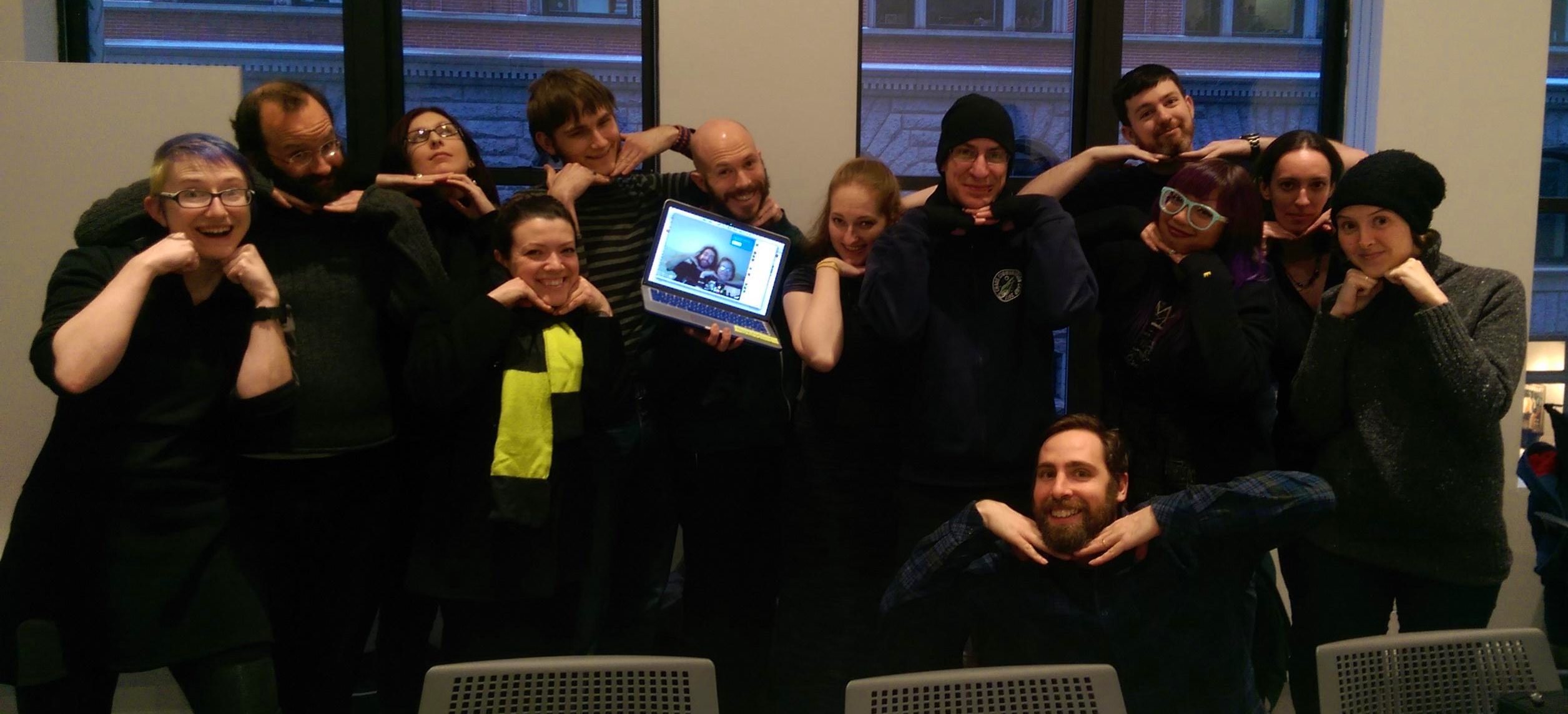Originally posted on the Aspiration blog
A group of fifteen participants gathered in New York City on February 13 and 14 to discuss the idea of Weaponized Social: the notion that social harms resulting from digital interactions can become dangerously amplified online by the network effect. We discussed what might be done to rethink the ‘social scripts’ that trigger conflict, and how to mediate conflicts as they arise in digital spaces (visit this post to learn more about “social scripts”).
At the event, we recognized that while online interactions can enact harmful consequences, this is a tractable problem; we are in a position to make changes to social scripts in our parts of the world and corners of the web. We understood that many of the things we love most about the internet (e.g., the ability to ambiently connect with long-time friends, to interact (and fall in love with!) strangers, and to vocalize your causes) are also what can make it seem like a dangerous place, where we may be susceptible to harassment or having private information leaked by known or unknown entities.

We took the first half of day one to co-create an agenda and to participate in an idea spectrogram in order to challenge assumptions of agreement and convey the diversity of world views in the room. We then dedicated the second half of the day to the common threads across the various issues we were working in. One such shared belief was that rather than creating one-size-fits-all content (e.g., a single deescalation guidebook), we should instead embrace many versions of the same idea being present, for various levels of knowledge, language, and learning styles (think of things like “Drawing for Scientists“).
We also considered how the ways people connect to one another influences their interactions. Calling this session “structures,” it included graph and network visualizations coming into beautifully-illustrated play. We then explored ways of forming and maintaining healthy communities, creating general guidelines to create safe space within defined communities, and to recover if a community has become unsafe.
On the second day, we discussed the more tangible aspects of online scripts, such as:
- nonviolent communication
- historical trolling (i.e., trolling pre-online harassment)
- recovering from unintentional mistakes (yours or someone else’s)
- nonverbal communication online
- constructing bridges between disagreeing people
- solidarity in nebulous groups (what is it to have someone’s back when you’re not technically in a community together? What about if it is an open chat room anyone can join?)
Throughout these discussions, we recognized that echo chambers are to be avoided, but that safe space is also needed for reconciliation, adaptation, and learning. Assuming that a perfectly safe space is also one in which freedom to act is incredibly constrained, we now advocate creating “safe foyers” rather than blanket “safe spaces” (i.e., “Please step over here with me so we can figure out where things went wrong”).
In this model, the safe foyer being unsuccessful would mean bringing in more community members to escalate conflict resolution. We are painfully aware that many abusive people will use back room conversations to quietly continue antisocial behavior, while still seeing that back room conversations are a valuable channel of support for conflict resolution, and we look forward to further examining this tension.
There were many common threads and themes here as well. Such as:
- Intended audience matters (see also: “Context Collapse“.)
- Translators between world views are a valuable and necessary (and should be celebrated and rotated in order to prevent fatigue and burn-out)
- Both historical trolling and non violent communication strive for exploration and emotional maturity for all parties involved (albeit by incredibly different methods)
In each of these, we aimed to include and support neurodiversity, such as those with autism spectrum disorders or with scrupulosity.
The question we will continue to carry forward is: How do we inspire change and self-reflection in our selves and the communities we engage with? To this end, we have a few projects started:
- Guide for supporting activists
- Guide in how to ask for critique in a way you can best hear it
- Self-awareness checklist
- Guide to wielding the privilege sword
- Checklist for making safe space (and path-correction when things are going poorly)
- Guide to expressing nonverbal cues in text-based space
- Guide to using nonviolent communication among people who use differing empathic styles
These conversations required trust and comfortable space, and we were honored to be housed by the newly opened Civic Hall in NYC’s Flat Iron District. We thank Micah Sifry, a long-time Aspiration friend, who offered this newly established community space around civic tech for the Weaponized Social event. We couldn’t dream of a more appropriate space. Please do welcome them to the geographic and interest neighborhoods when you have a chance.
As we continue moving forward on these projects, we hope you’ll contact us and let us know if you’d be interested in participating in (or hosting!) a future event by contacting weaponizedsocial@aspirationtech.org
